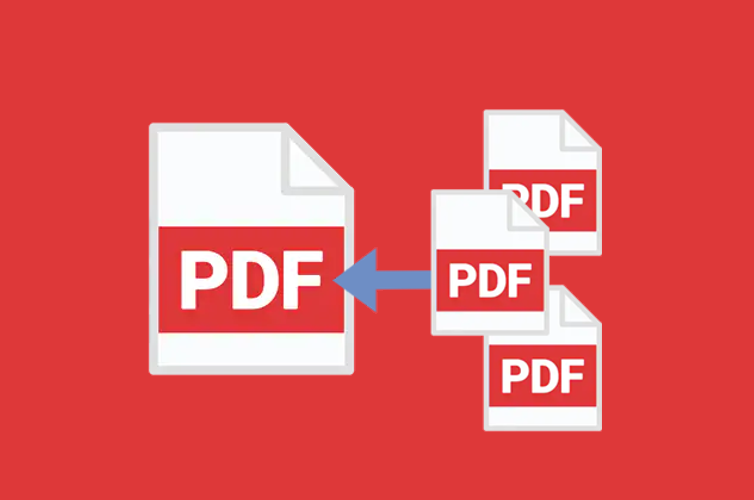HR software development cost can vary significantly depending on the features and functionalities that a company requires. It has a wide range of capabilities, from recruitment to performance management to compliance and payroll.
The development of human resource (HR) software is an investment organizations should make to optimize their HR processes, streamline employee management, and enhance employee experience. As we move into the digital age, HR software is a complete solution that offers a variety of features for diverse needs.
Features embedded in HR Software development solutions are crucial in determining the effectiveness and efficiency of a company’s HR Ecosystem. These features, which include employee information management tools, recruitment software, performance analytics, compliance management, and more, all contribute to a data-driven, seamless approach to managing human resources.
The development of HR software has its challenges, including costs. The scope of work, technology, and complexity influences costs. AI, mobile compatibility, and security factors increase the project’s complexity.
Let’s discover HR software development cost and features, helping businesses understand what to expect when investing in such a system. Explore the functionalities and considerations needed by organizations to achieve a balanced approach between software capability and development investment.
Essential HR Software Features
The Human Resource software is a critical component of modern organization management. It automates and streamlines various HR processes, enhancing efficiency and the employee experience. These are the key features of HR software:
-
Employee Information Management
The HR software is a central repository to store and manage employee data. This includes contact details, personal information, work history, performance data, etc. The HR department can streamline its operations with this feature, which provides a complete view of every employee.
-
Recruitment and Applicant Tracking System (ATS)
Many HR applications include tools to manage the recruitment process. It consists of creating job postings, tracking applications, managing resumes, and streamlining interviewing and hiring processes. The Applicant Tracking Systems in HR software helps HR professionals streamline their hiring processes, from posting new job opportunities to onboarding employees.
-
Onboarding and Offboarding
A positive employee experience is dependent on efficient processes for both the onboarding and offboarding phases. Onboarding software automates documents and provides new employees with access to resources. During offboarding, the HR software helps ensure employees’ smooth transition by managing tasks such as exit interviews, return equipment, and access cancellation.
-
Time and Attendance Management
Software for HR tracks absences and leave, as well as employee work hours. It includes automated attendance tracking, timesheet submission, and leave requests. It streamlines the payroll process and provides accurate pay based on attendance.
-
Performance Management
The HR software helps to facilitate the performance appraisal process by offering tools that allow for goal setting, evaluations, and feedback. The software helps to document employee performance and identify areas of improvement. It also recognizes achievements. Features of performance management contribute to employee engagement and talent development.
-
Learning and Development
Most HR software development services provide tools for managing the training and development of employees. Create training modules, track employee progress, and assess the effectiveness of learning programs. These functionalities are essential for the skill development and continuous improvement of employees.
-
Employee Self-Service (ESS)
ESS allows employees to manage and access their information, reducing administrative work for HR departments. Self-service will enable employees to view their pay stubs, update personal information, request time off, or access HR documents.
-
Administration
Software for HR helps manage employee benefits, such as retirement plans and health insurance. The software helps with enrollment, keeps track of benefit usage, and ensures that regulations are followed. It streamlines the benefits administration, making it easy for HR professionals and managers to handle complex benefit structures.
-
Payroll Processing
The payroll features calculate employee wages, taxes, and deductions automatically. It reduces errors and helps ensure compliance with the tax laws. Integrating with time and attendance management allows for accurate processing of payroll based on working hours.
-
Compliance Management
Software that helps companies comply with laws and regulations relating to labor is called HR software. The software includes tools for monitoring regulatory changes, aligning HR policies with legal requirements, and creating reports to be used in compliance audits. It is essential for reducing legal risks related to HR practices.
-
Workflow Automation
Automated features in HR software automate repetitive processes and streamline workflows. These can be automated tasks such as sending reminders about performance reviews, processing requests for leave, or triggering onboarding. Automation of workflows improves productivity and decreases manual error.
-
Analytics and Reporting
Analytics tools are available in HR software to generate reports on HR metrics. These include employee turnover rates, performance trends, and workforce demographics. HR professionals can use analytical insights to make strategic workforce plans and data-driven decisions.
-
Mobile Accessibility
Modern HR software offers mobile apps or responsive interfaces that allow employees to perform their tasks and access information on the move. Mobile accessibility increases flexibility and responsiveness when managing HR processes.
-
Capabilities for Integration
Integrating with business software such as ERP or CRM is an important feature. It ensures a seamless flow of data between departments and improves the overall efficiency of an organization.
-
Data Privacy and Security
The security of data is a priority for HR software. The confidentiality of HR data is maintained by features such as role-based control and encryption.
HR Software Development Cost
With a thorough project analysis, estimating costs accurately is more accessible. Small- to medium-sized HR software costs can vary from thousands to millions of dollars. However, larger enterprise projects may be less than one million dollars. Working with software professionals who have experience conducting in-depth needs assessments and analyses will enable you to obtain more precise estimates tailored to meet the exact specifications of your project.
Costs associated with HR software development depend upon several variables, such as complexity, scope, development team location, and other considerations. The cost of developing custom HR software is affected by multiple factors. Below are the key cost factors:
-
Project Scope & Features
Costs are affected by the complexity of features and their breadth. A basic HR system with essential features like leave tracking and employee management will be less expensive than an integrated system, including modules for learning and development, recruitment, performance evaluation, and management.
-
Technology Stack
Costs are affected by the choice of frameworks, languages, and technologies. Using popular technologies that are well-supported can reduce costs and development times. If some specific requirements or integrations require more advanced technology, these could substantially affect the budget.
-
User Interface and Experience Design
HR software must have an easy-to-use, user-friendly interface for optimal use by employees and management alike. Engaging professional UI/UX designers may enhance user experiences but increase development costs significantly.
-
Mobile Compatibility
The cost of development will rise if the software must be accessed on mobile devices via native apps or responsive design. The development of mobile compatibility is more complex, but it’s often necessary for workforce management.
-
Integration with Third-Party Systems
Integration of HR software into existing systems, such as accounting or payroll software, may result in higher development costs. Still, a seamless integration improves the overall efficiency of systems and accuracy.
-
Requirements for Security
Security is a priority for HR software because it deals with employee information that can be sensitive. Costs can be increased by implementing robust security measures such as encryption and secure authentication.
-
Scalability and Customization
Development costs depend heavily on being able to adapt software for specific needs while being flexible enough to scale as your company expands in the future. Solutions with more scalability require extra work upfront but could save costs over time.
-
Testing and Quality Assurance Services
Test HR software thoroughly to ensure its safety and dependability. Quality assurance activities, such as functional testing, performance testing, and security testing, influence the development cost.
-
Regulatory Compliance
Additional development effort may be needed to maintain and implement compliance features if the HR software must comply with industry regulations, data protection laws, or specific industry regulations.
-
Training and Deployment
Consider the costs associated with training and supporting users and deploying HR software. The cost of training materials, documentation for users, and infrastructure support are all factors that contribute to this total.
-
Maintenance and Updates
Total ownership costs depend heavily on maintenance and updates required after launch and any possible problems that might arise. It’s essential that software remains compatible with evolving technologies and updates are regularly performed to stay ahead of the game.
-
Geographical Location of the Development Team
The location of the team that develops can affect costs. Development teams’ prices in areas with high living costs are generally higher. Cost savings may be possible with offshore development teams, but communication and collaboration are crucial.
-
Project Management and Communication
Successful HR software is a result of efficient project management and effective communication. It would be best to consider the costs of project management software, communication platforms, and coordination tools.
Future Trends Affecting HR Software Development Cost
These are the key trends that will affect future HR software costs:
-
Artificial Intelligence and Machine Learning
An HR software development company integrates artificial intelligence and machine learning in HR software to improve decision-making by enhancing tasks such as resume screening, employee satisfaction analysis, and predictive analytics. These advanced technologies can increase costs because of the complex algorithms and data requirements.
-
Natural Language Processing and Chatbots
Chatbots, NLP, and HR software can enhance employee communication, improve employee self-service, and automate common inquiries. The development and integration of sophisticated chatbot functionality may impact the costs associated with software development.
-
Blockchain Technology
The blockchain can improve the security and transparency of HR processes such as payroll and employee records. The complexity of the development effort required to implement blockchain technology can increase costs.
-
Remote Work and Digital Workplaces
Remote work will likely increase demand for software to support remote management of workforces, communication, collaboration, and coordination. The development of features that facilitate remote working, like virtual onboarding platforms and collaboration platforms, can impact costs.
-
Virtual Reality and Augmented Reality
AR and VR can be used in HR software for virtual training, onboarding, and collaboration. The specialized hardware and skills required to create immersive AR and VR experiences may raise development costs.
-
Cybersecurity Measures
In an evolving threat environment, ensuring that HR software has robust cybersecurity features is essential. Additional development may be required to implement security features like encryption and biometric verification.
-
Regulatory Compliance & Data Privacy
The constant changes to data protection laws and the increased attention to privacy could require updates to HR software. Keeping up with changing regulations can increase the cost of development.
-
Continuous Integration and DevOps Practices
Adoption of DevOps and continuous integration practices to accelerate and improve software development may impact costs.
-
Personalization and Customization
A trend toward personalized employee experiences could drive the demand for highly customized HR software. Adding extensive customization features may impact development costs and require extra effort.
-
Environmental, Social, and Governance (ESG) Reporting
In HR software, the increasing emphasis placed on ESG and Corporate Social Responsibility may lead to features that track and report on sustainability and social impact metrics. Incorporating such features may influence development costs.
Conclusion
Features and costs are important considerations when developing software for HR. This reflects the changing landscape in technology and workforce management. This extensive range of HR software features, from AI integration to blockchain and employee information management, shows the changing needs of companies to improve their HR processes. Future innovations, such as decentralized governance and advanced analytics, will influence the complexity and scope of HR software.
The cost of a product is closely tied to its features, the compliance required, and whether it incorporates cutting-edge technology. Although investing in HR software requires upfront development costs, the investment will pay off over time with increased efficiency, better compliance, and happier employees. The cost of ownership depends upon factors like location, security measures, and maintenance needs.
To strike an equilibrium between cost-efficiency and feature richness, a thorough assessment of your needs must be performed alongside working with professionals experienced in software development. The features and costs of HR software are critical in developing a workforce management system that is modern, efficient, and ready for the future.









